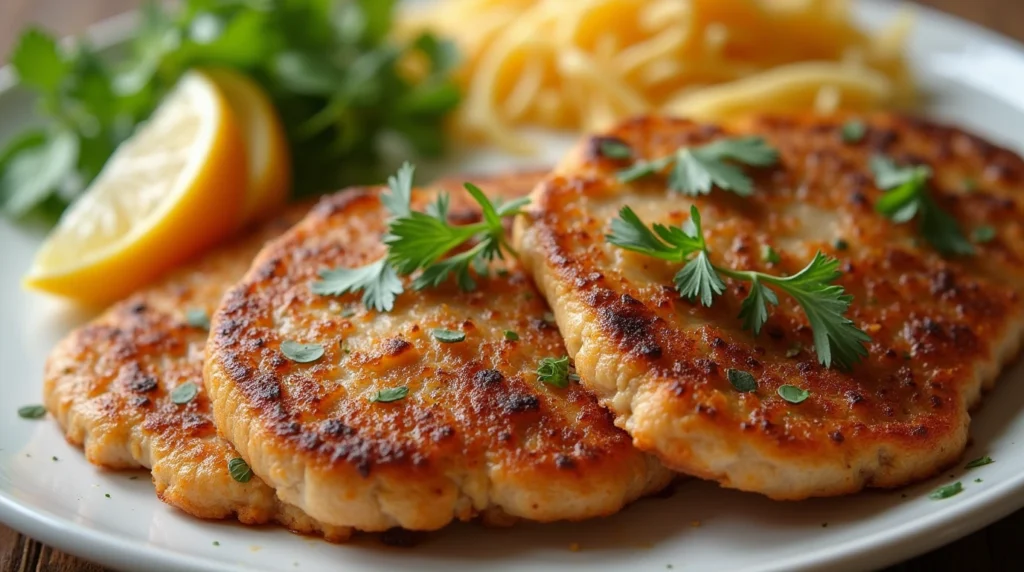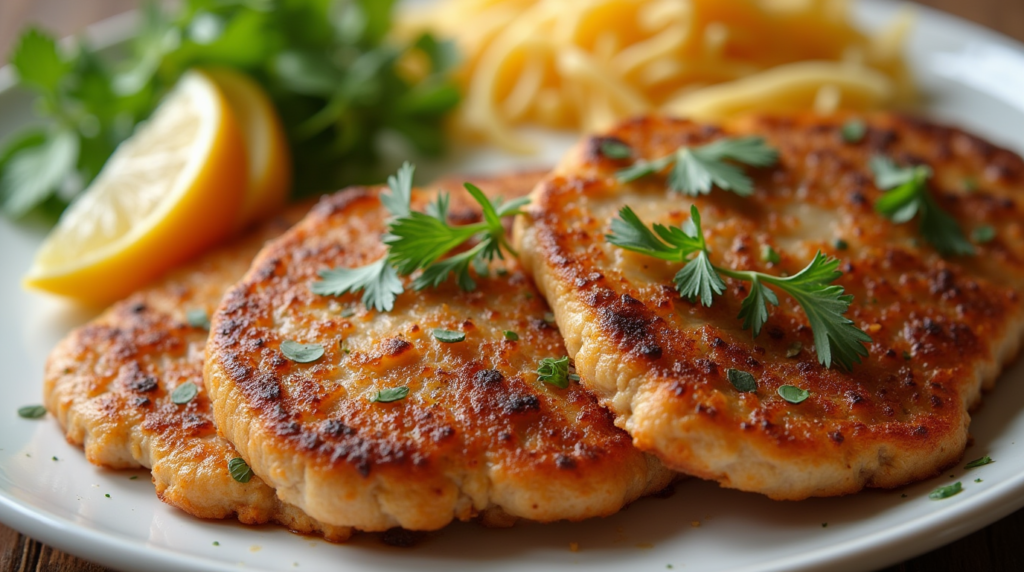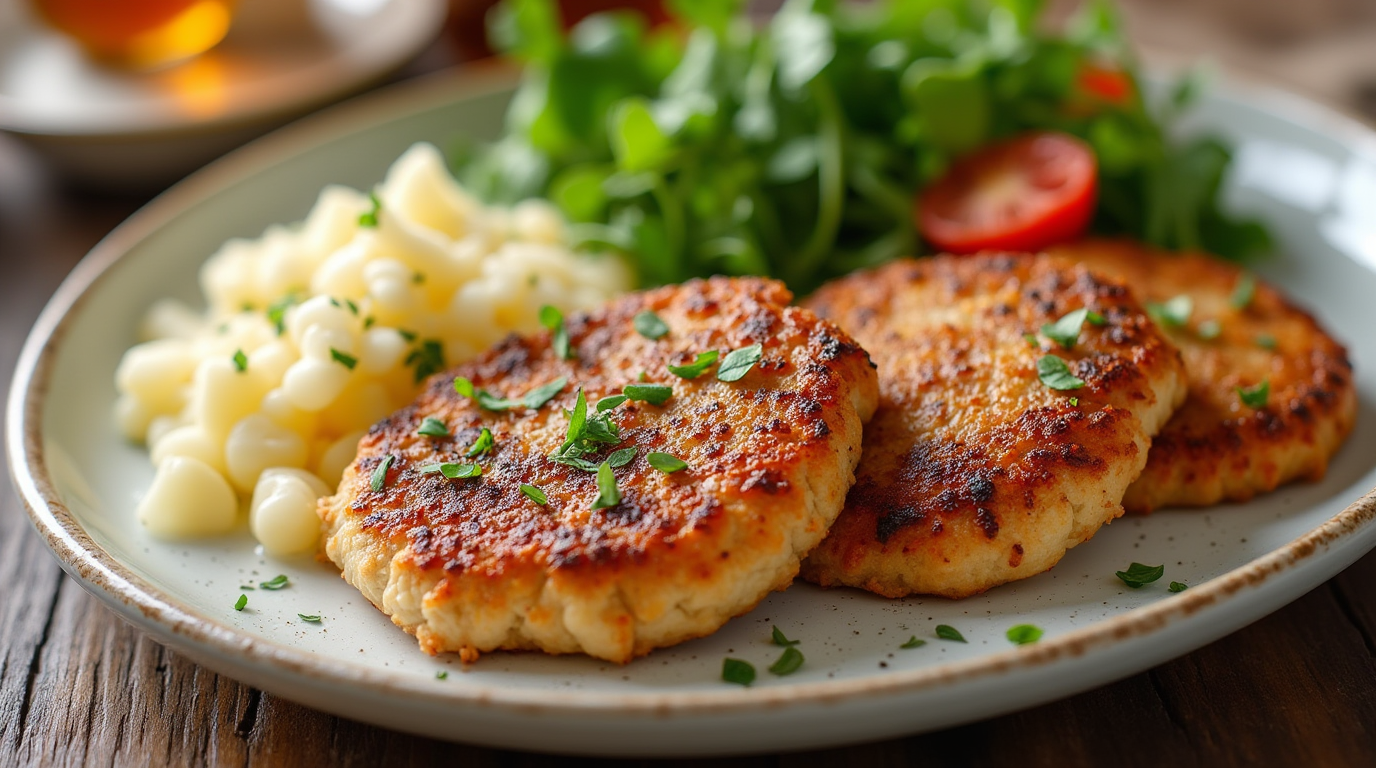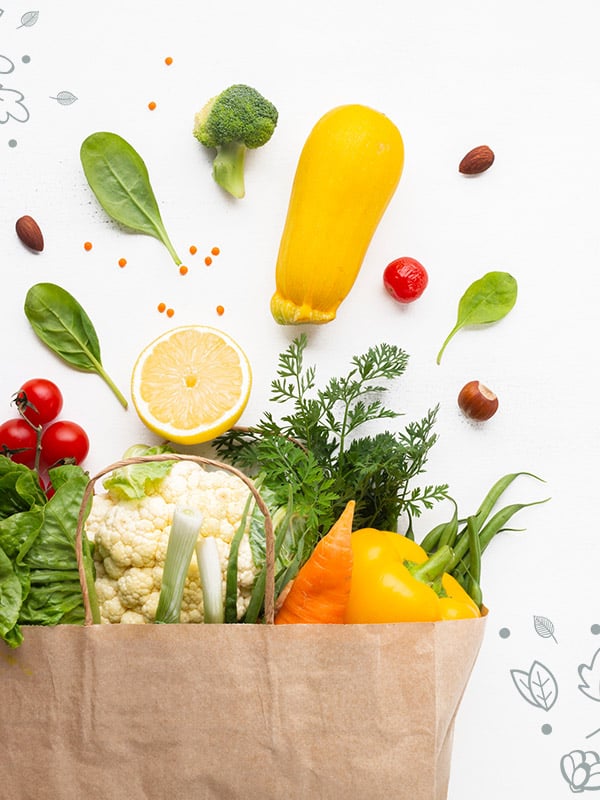Make your weeknights special with homemade breaded pork cutlets. This dish is loved for its crunchy outside and juicy inside. You can make a delicious pork schnitzel at home with just a few ingredients. Get ready for a dish that’s both crispy and tender.
Table of Contents
Key Takeaways
- Discover the essential ingredients and kitchen tools needed for perfect breaded pork cutlets.
- Master the art of breading pork for a consistently crispy and even coating.
- Learn the optimal frying temperature and timing to achieve that signature crunch.
- Explore various serving suggestions and healthier variations of this beloved dish.
- Unlock storage and reheating techniques to enjoy leftovers at their best.
Essential Ingredients for Perfect Breaded Pork Cutlets
Making delicious breaded pork cutlets starts with picking the right ingredients. The cut of pork, breadcrumbs, and seasonings all matter. They help get that crispy, golden-brown texture and flavor.
Best Cuts of Pork for Cutlets
Pork loin is the top pick for cutlets. It’s lean, tender, and slices well. This makes it perfect for breading and frying. Pork chops can also work, but you might need to adjust cooking times because of their thickness.
Breadcrumb and Seasoning Options
- Breadcrumbs: Panko breadcrumbs give a light, airy, and crispy texture. Traditional breadcrumbs offer a classic breading.
- Seasonings: A mix of salt, pepper, garlic powder, and paprika is a great choice. It boosts the pork’s flavor. Adding herbs like thyme or rosemary can add more depth.
Required Kitchen Tools
- A meat mallet or tenderizer to pound the pork cutlets evenly.
- Shallow dishes or bowls for breading.
- A heavy-bottomed skillet or Dutch oven for frying.
- A wire rack or paper towel-lined plate for draining cooked cutlets.
| Ingredient | Recommendation | Why |
|---|---|---|
| Pork Loin Cutlets | Lean, tender, and even thickness | Ideal for breading and frying |
| Panko Breadcrumbs | Light, airy, and ultra-crispy texture | Creates the perfect crunchy coating |
| Seasoning Blend | Salt, pepper, garlic powder, paprika | Enhances the natural flavor of the pork |
With the right ingredients and tools, you can make restaurant-quality breaded pork cutlets at home.
Preparing Your Pork Cutlets for Breading
Before you start breading, you need to prepare your pork cutlets. This step is key for getting that crispy, golden-brown finish. Let’s go over the important steps to get your cutlets ready for breading.
Trimming the Fat
First, trim off any extra fat from the cutlets. This makes the breading stick better and keeps the cutlets from getting too greasy. Use a sharp knife to carefully cut away the fat, without taking too much meat.

Pounding the Cutlets
Then, pound the cutlets to make them the same thickness. This is important for even cooking and to avoid uneven browning. Place the cutlets between parchment paper or plastic wrap. Use a meat mallet or a heavy pan to gently pound them until they’re about 1/4 inch thick.
Patting Dry
- After trimming and pounding, pat the cutlets dry with paper towels.
- Drying the cutlets removes excess moisture. This helps the breading stick better and prevents them from getting soggy when fried.
By properly preparing your pork cutlets, you’re setting the stage for a deliciously crispy breaded dish. With the fat trimmed, thickness evened, and surface dried, your cutlets are now ready for breading.
The Best Breading Technique for Crispy Results
Getting a crispy coating on your pork cutlets is all about the breading technique. We’ll look at the basic steps and share some expert tips for that perfect texture.
Standard Breading Procedure
The basic breading for pork cutlets has three steps:
- Dredging: Lightly coat the pork in all-purpose flour, shaking off any extra. This helps the batter stick to the meat.
- Egg Wash: Dip the floured pork into a beaten egg mix. The egg helps the breadcrumbs stick.
- Breadcrumb Coating: Press the pork into a plate of panko or regular breadcrumbs. This gives a crispy coating on all sides.

Common Breading Mistakes to Avoid
Even though the steps are simple, mistakes can happen. Avoid these common errors:
- Don’t overcrowd the pan while frying. It can cause uneven cooking and a soggy texture.
- Don’t skip the flour dredge. It’s key for the egg wash and breadcrumbs to stick well.
- Avoid using fine or stale breadcrumbs. They won’t give you a good crust.
Pro Tips for Even Coating
For a perfectly even and crispy dredging pork coating, try these expert tips:
- Pat the pork cutlets dry with paper towels before breading. It helps the batter stick better.
- Chill the breaded cutlets for 30 minutes before frying. It sets the coating.
- Gently press the egg wash and double breading into the pork. It creates a strong, stuck crust.
With these tips, you’re ready to make the crispiest, tastiest pork cutlets your loved ones have ever had.
Step-by-Step Pork Cutlets Recipe
Learning to make crispy, golden breaded pork cutlets at home is fun. Follow this guide to get tender and crunchy homemade schnitzel. It will taste just like the fried pork chops from your favorite restaurant.
- Start by pounding the pork cutlets to about 1/4 inch thick. This makes them cook evenly.
- Prepare your breading station with three dishes. One for flour, one for eggs, and one for breadcrumbs mixed with Parmesan and seasonings like garlic and paprika.
- Dip each cutlet in flour, then eggs, and finally in the breadcrumb mix. Press the breadcrumbs gently to stick.
- Heat a lot of vegetable oil in a big skillet over medium-high. Fry the cutlets for 2-3 minutes on each side until they’re golden and crispy.
- Drain the fried breaded pork cutlet recipe on a paper towel. Sprinkle with salt while it’s hot.
Serve your crispy and tender homemade schnitzel right away. Pair it with your favorite sides for a delicious meal. Enjoy the juicy pork and crunchy breading in every bite!
Perfect Frying Temperature and Timing
To get crispy, golden-brown pork cutlets, focus on the frying temperature and time. The right oil and keeping the temperature steady are key.
Oil Selection Guide
Choosing the right oil is crucial for frying pork cutlets. Look for oils with a high smoke point. Here are some good choices:
- Vegetable oil
- Canola oil
- Peanut oil
- Grapeseed oil
These oils handle high heat well without burning or adding bad flavors. Stay away from olive oil or butter because they burn easily.
Temperature Control Tips
The best frying temperature for pork cutlets is between 350°F and 375°F. Use a digital thermometer to check the oil’s temperature. If it’s too hot, the cutlets will burn before they’re fully cooked.
If the oil is too cool, the cutlets will soak up too much oil and get greasy. To keep the temperature right, adjust the heat and don’t overcrowd the pan. Fry in small batches to keep the oil steady.
Let the oil heat up again between batches. This ensures your pork cutlets come out perfectly. With the right oil and temperature, you’ll get crispy, golden cutlets every time.
Serving Suggestions and Side Dishes
Make your breaded pork cutlets even better by adding tasty sides and garnishes. These extras not only match the pork’s flavors but also make your meal look great.
Try serving the pork with a fresh green salad and tangy vinaigrette. The crisp greens and zesty dressing are a perfect contrast to the rich pork.
For a fuller side, go for roasted or mashed potatoes. They match the pork’s crunchiness well. Creamy coleslaw also adds a tangy and crunchy touch.
For something different, pair the pork with sautéed mushrooms or caramelized onions. These add rich flavors and a bit of elegance.
Finish with a garnish of chopped parsley, chives, or lemon zest. These simple touches can make your dish look and taste better.
Remember, the goal is to create a balanced and attractive plate. Let the breaded pork cutlets be the main attraction.
Storage and Reheating Guidelines
Storing leftover pork cutlets right is key to keeping them crispy and flavorful. Whether you have a few or a whole batch, the right storage and reheating can make every bite a delight.
Proper Storage Methods
Let your breaded pork cutlets cool down before storing them. Use an airtight container or a resealable plastic bag. Don’t stack them to avoid sogginess. Instead, lay them flat for better air flow.
For the best taste, keep them in the fridge for 3-4 days. If you need to store them longer, freeze them. Wrap each cutlet in plastic or foil, then bag them up. They can stay frozen for 2-3 months.
Reheating for Maximum Crispiness
To reheat your leftover pork cutlets right, use the oven. Preheat it to 400°F (200°C). Place the cutlets on a parchment-lined baking sheet. Heat them for 10-15 minutes, flipping halfway, until crispy.
Don’t use the microwave to reheat breaded pork. It can make the coating soggy. For a quicker option, reheat in a skillet over medium-high heat. Just watch them to avoid burning.
Healthier Variations of Breaded Pork Cutlets
Looking for a healthier version of breaded pork cutlets? There are tasty alternatives to try. You can make baked pork cutlets by using a lighter breading and baking them. This way, you get a crispy outside without the extra calories and fat.
Another great option is to make air fryer schnitzel. The air fryer uses hot air to make the cutlets crispy, using much less oil than frying. It’s a healthier way to enjoy a crunchy, golden-brown coating.
Want an even lighter breading? Try using low-fat breading like whole-wheat breadcrumbs or almond flour. These options are lower in calories and fat. Serve these healthier cutlets with fresh veggies and whole grains for a balanced meal that’s good for you.
FAQ
What are the best cuts of pork for making breaded pork cutlets?
Pork loin, pork tenderloin, or pork chops are the best cuts. They are tender and hold the breading well.
What type of breadcrumbs should I use for the best texture?
Use panko breadcrumbs for a crispy texture. Panko is light and airy. You can also try homemade or seasoned breadcrumbs for different flavors.
What essential kitchen tools are needed to prepare breaded pork cutlets?
You’ll need a meat mallet, a shallow bowl for breading, and a heavy skillet for frying.
How do I properly prepare the pork cutlets before breading?
Trim excess fat and pound the cutlets to 1/4 to 1/2 inch. This ensures even cooking and crispiness. Dry the cutlets with paper towels for better breading.
What is the standard breading procedure for achieving a crispy coating?
First, dredge in flour, then in a beaten egg mixture, and finally in breadcrumbs. Press the breadcrumbs firmly for an even coating.
What are some common mistakes to avoid when breading pork cutlets?
Avoid not drying the cutlets, overcrowding the pan, and not keeping the oil at the right temperature. Dry the cutlets, fry in batches, and monitor the oil temperature.
What’s the best oil to use for frying pork cutlets and how do I maintain the correct temperature?
Use oils like vegetable, canola, or peanut oil. Keep the oil between 350°F and 375°F for even cooking. Use a thermometer to check the temperature.
What are some tasty side dishes that pair well with breaded pork cutlets?
Try mashed potatoes, roasted vegetables, sauerkraut, or a green salad. You can also try sweet potato fries, coleslaw, or a quinoa salad.
How should I store and reheat leftover breaded pork cutlets?
Store them in an airtight container in the fridge for 3-4 days. Reheat in a 400°F oven for 10-15 minutes or in an air fryer at 400°F for 5-7 minutes.
Are there any healthier variations of breaded pork cutlets?
Yes, bake the cutlets instead of frying for less fat and calories. You can also use an air fryer or lighter breading options like whole wheat breadcrumbs.



